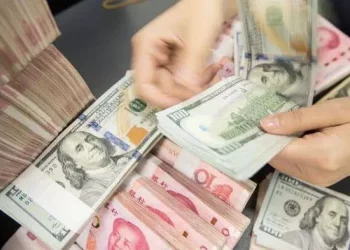In the dynamic landscape of international finance, keeping a close eye on currency exchange rates is essential for businesses, investors, and individuals alike. Among the myriad of currency pairs, the USD to INR (United States Dollar to Indian Rupee) exchange rate is of particular interest, given the economic significance of the United States and India. As of the latest data available, the question on many minds is, “What Is 100 USD to INR?” In this comprehensive article, we will delve into the current state of the USD to INR exchange rate, explore the factors influencing it, and provide insights for those navigating the intricacies of global currency markets.
Understanding the Basics
1. Exchange Rate Fundamentals
Before we delve into the specifics of the USD to INR exchange rate, it’s crucial to understand the fundamentals of exchange rates. An exchange rate is the value of one currency in terms of another. In the case of USD to INR, it represents the amount of Indian Rupees one can obtain with a given amount of U.S. Dollars.
2. USD to INR Historical Perspective
To gain a comprehensive understanding of the current exchange rate, it’s beneficial to glance back at its historical trajectory. Historical data provides insights into trends, fluctuations, and potential future movements. Over the years, the USD to INR exchange rate has witnessed various highs and lows, influenced by economic, geopolitical, and market-specific factors.
Current Exchange Rate Analysis
1. Real-Time Exchange Rate
As of the latest update, the USD to INR exchange rate stands at 83.09.At the current exchange rate, 100 US dollars can be exchanged for approximately 8308.69 Indian rupees. This real-time figure reflects the relative value of the U.S. Dollar against the Indian Rupee. Investors, traders, and businesses closely monitor this rate to make informed decisions regarding international transactions, investments, and financial planning.
See Also:100 INR in CAD
2. Factors Influencing the Current Exchange Rate
Several factors contribute to the fluctuations in the USD to INR exchange rate. Understanding these variables is crucial for predicting future movements and making informed financial decisions.
3. Economic Indicators
Economic indicators play a pivotal role in shaping exchange rates. Key indicators include GDP growth, inflation rates, employment figures, and trade balances. For the USD to INR exchange rate, the economic performance of both the United States and India significantly influences investor sentiment.
4. Monetary Policy
Central banks, such as the U.S. Federal Reserve and the Reserve Bank of India, implement monetary policies that impact interest rates and money supply. Changes in these policies can have cascading effects on exchange rates, affecting the USD to INR dynamic.
5. Geopolitical Events
Geopolitical events, such as trade tensions, political instability, and global conflicts, can send ripples through currency markets. Traders often respond swiftly to geopolitical developments, influencing the USD to INR exchange rate.
6. Market Sentiment and Speculation
Currency markets are highly sensitive to sentiment and speculative activities. Traders’ perceptions of economic conditions, political stability, and future market movements contribute to short-term fluctuations in the USD to INR exchange rate.
7. Trade Balances
The trade balance between the United States and India is a critical factor in determining the exchange rate. Trade surpluses or deficits can impact the demand for each country’s currency, affecting the USD to INR rate.
8. Global Economic Trends
In an interconnected world, global economic trends also play a role in shaping currency values. Factors such as commodity prices, technological advancements, and international economic cooperation can impact the USD to INR exchange rate.
Forecasting the Future
With a nuanced understanding of the current USD to INR exchange rate and the factors influencing it, the next logical step is forecasting. While predicting currency movements with absolute certainty is challenging, informed analysis and staying abreast of economic developments can aid individuals and businesses in making prudent financial decisions.
Conclusion
In conclusion, the USD to INR exchange rate is a dynamic metric shaped by a multitude of factors. From economic indicators to geopolitical events, each element contributes to the intricate dance of currencies on the global stage. As we continue to navigate the ever-evolving landscape of international finance, staying informed and adapting to changing circumstances will be key. So, what is 100 USD to INR today? The answer lies in a careful analysis of the present and a well-informed outlook for the future.
Related Topics:
Current INR Exchange Rate: How Much Is INR to SGD
Current INR Exchange Rate: How Much Is One Lakh Rupees in Dollars?
Current INR Exchange Rate: Convert Rupees to CFA
























